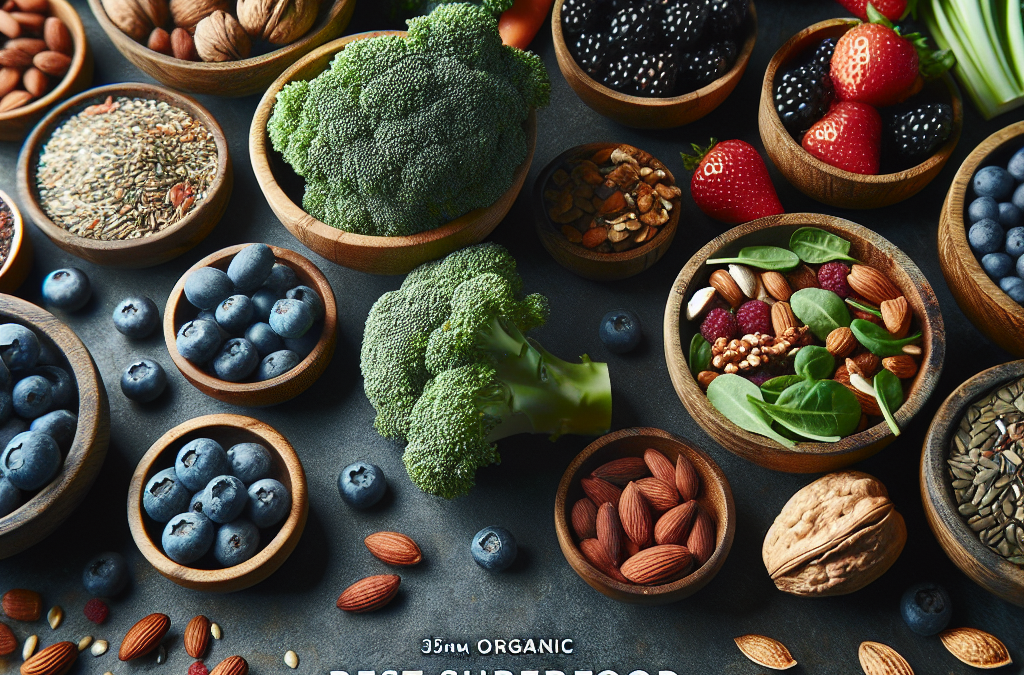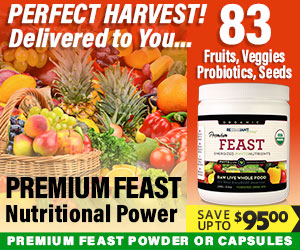1. Leafy Greens
Why Leafy Greens are Essential
Let me tell you, leafy greens are like the superheroes of the food world! Packed with vitamins A, C, and K, these greens are the backbone of a healthy diet. When I began adding them to my meals, my energy levels shot up, and I felt more vibrant overall. Seriously, if you haven’t tried incorporating kale, spinach, or arugula, you’re missing out!
Not only do they taste great in salads, but they can also be sneakily added to smoothies or even soups. You can get your greens in without even thinking about it. It’s a total game-changer for those of us who struggle to eat enough veggies daily.
Plus, leafy greens help in detoxification. They’re known to be rich in antioxidants and can reduce inflammation. If you’re aiming for better skin and digestion, start tossing some greens on your plate. You’ll feel the difference!
How to Incorporate Leafy Greens into Your Diet
There are so many creative ways to enjoy leafy greens! My favorite way is to blend them into a fruit smoothie. Toss in some spinach with banana or berries, and you’ll barely even taste them! It’s a simple trick to supercharge your morning routine without any hassle.
Another tasty option is to sauté them with garlic and olive oil. It’s a quick side dish that elevates any meal. Trust me, once you try this, you’ll wonder why you ever settled for plain veggies. Don’t forget to sprinkle some salt and pepper to add flavor!
If you’re feeling adventurous, why not try a leafy green salad? Mix different greens, add some nuts, seeds, or quinoa, and a zesty dressing. It’s super healthy, satisfying, and perfect for lunch or dinner. I love throwing in some chickpeas too for extra protein!
Choosing the Best Quality
When it comes to leafy greens, freshness is key. I always recommend hitting up your local farmer’s market for the best organic options. Not only are they fresher, but supporting local farmers is always a win. Organic usually means fewer pesticides, which is something I consider important.
Look for vibrant colors and avoid any greens that look wilted or discolored. This usually means they’re past their prime. Believe me, nothing ruins a salad like limp lettuce!
Don’t forget about the importance of washing your greens thoroughly. Even organic ones can have some dirt or bugs lurking around. A simple rinse should do the trick, but there are great produce washes available too if you want to go the extra mile.
2. Berries
The Nutritional Powerhouse
Let’s take a second to appreciate berries! They are not only delicious, but they’re also a powerhouse of antioxidants, fiber, and vitamins. Whenever I feel like snacking, berries are my go-to. They’re sweet, juicy, and can satisfy that craving without the guilt!
Whether it’s blueberries, strawberries, raspberries, or blackberries, each brings its own unique set of health benefits. Research shows they may reduce the risk of chronic diseases while promoting heart health. Who doesn’t want that?
Plus, they’re low in calories but high in nutrients. It’s the perfect combo if you’re trying to maintain a healthy weight while still enjoying something sweet. I like to freeze them and toss a handful into my morning oatmeal or yogurt!
Add Berries to Your Meals
Incorporating berries into your diet is ridiculously easy! I love adding a mix of berries on top of my breakfast bowl. They’re perfect for yogurt, cereal, or even pancakes. Just a handful elevates a normal meal into something special.
You can also blend them into smoothies for added flavor and nutrients. Sometimes, I’ll add a splash of almond milk or yogurt, making it the yummiest, nutrient-packed drink ever. A quick and easy way to pump up your day!
If you’re feeling fancy, try making a berry compote to drizzle over desserts. It’s an elegant touch that’s super simple and adds loads of flavor. Just cook the berries down with a little honey or maple syrup, and voila!
Perfect Pairing
One of my favorite things about berries is how well they pair with so many foods. Cheese boards featuring various berries are always a hit! Cream cheese or a soft cheese with berries can elevate any snack or party platter.
They also go well with salads, especially when dressed with a balsamic vinaigrette. The sweetness of the berries complements the tartness of the dressing, creating an explosion of flavors. It’s like a party in your mouth!
And don’t forget desserts! Berry pies, crumbles, or can even simply dipped in chocolate for a treat—bring them together, and you’re winning in life. Berries are a versatile, delicious way to enhance not just health but flavor, too!
3. Nuts and Seeds
The Healthy Snack
If you’re searching for a quick snack that’s healthy and filling, nuts and seeds are your answer! Loaded with protein, healthy fats, and fiber, they keep you satiated longer. Whenever I feel peckish between meals, I reach for a handful of almonds or pumpkin seeds. They’re nutritious, and let me tell you, super tasty!
What’s even better is that they’re incredibly versatile. You can throw nuts and seeds into salads, oatmeal, or even smoothies for a nice crunch. It’s an easy way to add nutrients without complicating your meals!
They’re an excellent source of essential fatty acids, which your body needs but can’t produce. Incorporating a variety of nuts like walnuts, pecans, or chia seeds gives your body diverse nutrients, which is a must!
Culinary Uses for Nuts and Seeds
Nuts and seeds can be used in so many culinary ways. Roasting them enhances their flavor; I love roasting walnuts with a sprinkle of salt—a perfect snack! You could also make your nut butters—it’s super satisfying to spread homemade almond butter on toast.
You can toss seeds into baked goods as well. Believe me, adding sunflower seeds to muffins takes them to another level! You get protein and healthy fat in an unexpectedly tasty way.
Most importantly, nut milk is a fabulous alternative to dairy. Almond milk, cashew milk, you name it! Making your own is fun, and it’s a great way to customize flavors without any additives.
Storage and Freshness
When it comes to nuts and seeds, keeping them fresh is crucial. I like to store them in airtight containers, preferably in the fridge. It keeps them from going rancid and maintains that crunchy texture we all love.
Get Certified Organic Whole Food Nutrition – Nutrient Dense Supplement
Avoid bulk buying unless you plan on using them quickly. The freshness of nuts can go down if kept for too long, and stale nuts are a definite no-go.
Checking the expiration date is a good habit, too. If they smell funny or taste off, toss them. There’s no harm in investing in fresh nuts; your health is worth it!
4. Fermented Foods
Benefits of Fermented Foods
Fermented foods have gained popularity for a reason— they’re fantastic for gut health! Foods like yogurt, sauerkraut, and kimchi are filled with probiotics that help your digestive system thrive. When I regularly eat fermented foods, I feel lighter and more energized. It’s like giving my gut a friendly hug!
These foods also help in boosting immunity. Having a healthy gut contributes to overall health, as a significant portion of our immune system resides in the gut. So, making fermented foods part of your diet can be a proactive approach to staying well.
Plus, they’re genuinely delicious! The tangy flavor of kimchi or the creamy texture of yogurt can really enhance a dish. You won’t just be improving your health; you can enjoy some seriously tasty eats!
Incorporating Fermented Foods into Your Meals
Getting fermented foods into your diet is easier than you might think! Start your day with some yogurt topped with fruit and nuts. It’s a delicious breakfast or snack that keeps your gut happy.
Kimchi can be a fantastic side to any Asian-inspired meal. Whether you’re making noodles, rice, or grilled proteins, adding kimchi gives a spicy, flavorful kick that complements the dish beautifully.
Don’t forget about sauerkraut— it’s amazing on sandwiches. Toss it on a hot dog or in a salad for a unique twist! You’ll be surprised at how these tangy additions can transform your standard meals.
Making Fermented Foods at Home
If you’re feeling adventurous, why not try making your own fermented foods? It’s fun and surprisingly uncomplicated! Making yogurt requires just milk and a good starter culture. Let it sit for a bit, and you’ll have your own homemade delight!
Kimchi is another easy project. All you need are some vegetables, salt, spices, and time to let them ferment. It’s a culinary experience that pays off. Plus, you can customize the flavor to your liking— more garlic, anyone?
Lastly, pickling vegetables is another form of fermentation. Carrots, cucumbers, and even red onions can be preserved and enjoyed for weeks. Trust me; these homemade goodies will elevate your meals while being healthier and way more economical!
5. Whole Grains
Why Choose Whole Grains
Whole grains are where it’s at. Choosing whole over refined grains is one of the best dietary decisions I’ve made! They are packed with fiber, which keeps me feeling full and helps with digestion. Brown rice, quinoa, oats, and whole wheat bread are staples in my pantry.
Not only do whole grains keep you full, but they’re also rich in vitamins and minerals— essential nutrients your body craves. They can stabilize blood sugar levels, reducing cravings over the day. Who wouldn’t want that?
Also, a diet rich in whole grains can help lower the risk of heart disease and Type 2 diabetes. It’s another win-win when you’re looking to maintain a balanced lifestyle!
How to Include Whole Grains
Adding whole grains into your diet is remarkably straightforward. Swap out white bread for whole wheat or try brown rice instead of white rice. You won’t miss it once you get accustomed to the hearty texture!
Oatmeal is a fantastic breakfast option. I love adding fruits and nuts to my oatmeal for added flavor and nutrients. Starting my day with whole grains sets a healthy tone for the rest of the day.
Quinoa is a versatile grain that can be used in salads, bowls, or as a side dish. It cooks quickly and has a delightful nutty flavor. I often use it as a base for my meals, alongside veggies and protein for a balanced plate!
Choosing and Cooking Whole Grains
When shopping for whole grains, look for products labeled as “100% whole grain.” Check out the ingredient list— the first ingredient should be a whole grain. Reading labels can make a significant difference in making healthier choices!
Cooking whole grains doesn’t have to be complicated, either. Most can be prepared like rice— boil and simmer until tender. With quinoa, it’s pretty much one part grain to two parts water. Give it a little fluffing up, and you’re golden!
Lastly, don’t forget about storing your grains properly. Keep them in an airtight container in a cool, dry place. Fresh grains mean delicious meals, so it’s crucial to maintain that freshness!
FAQs
1. What are superfoods?
Superfoods are nutrient-rich foods considered to be especially beneficial for health and well-being. They typically pack a lot of vitamins, minerals, and antioxidants!
2. Why should I choose organic superfoods?
Opting for organic means fewer pesticides, chemicals, and GMOs, which can be better for both your health and the environment!
3. How can I include these superfoods in my daily diet?
Start simple! Add berries to your breakfast, toss in leafy greens to your smoothies or salads, and snack on nuts throughout the day. Gradually introduce these into your routine!
4. Are organic superfoods more expensive?
They can be pricier, but buying in bulk or shopping at local markets sometimes makes them more affordable. Investing in your health is always worth it!
5. Are there any superfoods I should avoid?
There’s no specific superfood to avoid, but be aware of added sugars or unhealthy fats in some products. Always check ingredients and choose whole, natural options when possible!




